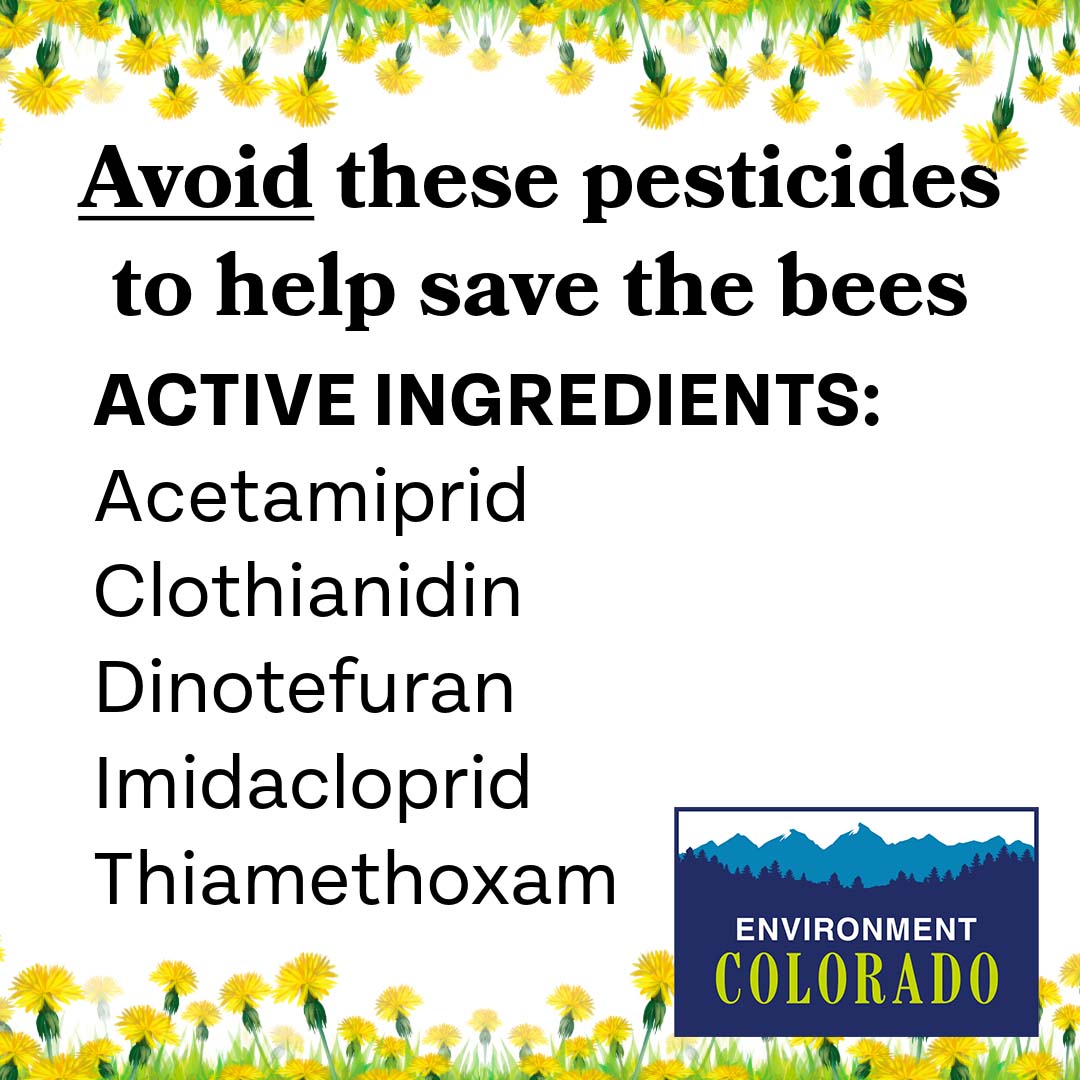

Bees and other pollinators are dying, John.
One of the main culprits is a group of toxic pesticides called neonicotinoids that attack bees' brains, paralyzing and ultimately killing them. Ending the worst uses of bee-killing pesticides can help protect pollinators.1
One way you can help is to make sure that you're not using any neonicotinoid pesticides around your home. Read our guide for how to identify what pesticides contain neonicotinoids.
What is a neonicotinoid?
Neonicotinoids are a class of pesticides -- that means there are a few different types of chemicals that have similar effects. Also shorthanded as neonics, they're compounds designed to target parts of the central nervous system of insects.2
The issue is that neonicotinoids can't tell the difference between what is considered a pest that threatens crops, and pollinators such as bumblebees. Neonics kill insects indiscriminately and are devastating bee populations around the world.
Which chemicals are considered neonicotinoids?
There are five common neonicotinoid pesticides:
- Acetamiprid
- Clothianidin
- Dinotefuran
- Imidacloprid
- Thiamethoxam
You can take a screenshot, save this photo or print it to keep our handy guide to neonics with you.

How do I know if a pesticide contains neonicotinoids?
Pesticide brands don't go around advertising that their products contain bee-killing neonics. So you may have to do some light sleuthing to see if there are neonicotinoid chemicals in a pesticide.
Most of the time, pesticide bottles will have a label listing the active ingredients. Similar to a nutrition label on our food, you can look at this to see the primary chemicals in the pesticide. If any of the active ingredients include "acetamiprid," "clothianidin," "dinotefuran," "imidacloprid" or "thiamethoxam," that's a neonicotinoid, and you should avoid using that pesticide.
The best way to protect bees and their ecosystem is to not use pesticides at all. We suggest going without pesticides, embracing imperfection in your garden or lawn, and letting nature do its thing.
Thank you for doing your part to keep bees safe,
Ellen Montgomery
P.S. Environment Colorado is working to end the worst uses of bee-killing neonicotinoids. You can help us save the bees with a donation today.
1. Oliver Milman, "Fears for bees as US set to extend use of toxic pesticides that paralyse insects," The Guardian, March 8, 2022.
2. "Neonicotinoid," ScienceDirect, last accessed March 6, 2024.
Your donation will be used to support all of our campaigns to protect the environment, from saving the bees and protecting public lands, to standing up for clean water and fighting climate change. None of our work would be possible without supporters like you. Environment Colorado may transfer up to $50 per dues-paying member per year into the Environment Colorado Small Donor Committee.
Environment Colorado, Inc.
1543 Wazee St., Suite 400, Denver, CO 80202, (303) 573-3871
Member questions or requests call 1-800-401-6511.
Facebook | Twitter
If you want us to stop sending you e-mail then follow this link -- Unsubscribe